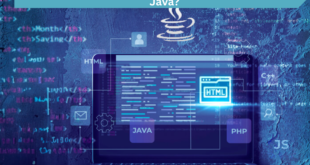In the ever-evolving world of book publishing, authors are increasingly focused on securing favorable royalties that reflect the value of their work. With a multitude of publishing companies to choose from, it can be challenging to navigate which ones offer the best returns on an author’s investment of time, creativity, and effort. This article will delve into the publishing companies known for offering the most competitive royalties, helping authors make informed decisions about where to publish their work.
Understanding Royalties in the Publishing Industry
Royalties are the payments that authors receive from the sale of their books. These payments are usually a percentage of the book’s sale price, and they can vary significantly depending on the publisher, the type of publishing agreement, and the distribution channels used.
Traditional Publishing vs. Self-Publishing Royalties
When it comes to royalties, there are distinct differences between traditional publishing and self-publishing. Traditional publishing companies often offer lower royalty rates compared to self-publishing platforms, but they provide other benefits such as editorial support, marketing, and wider distribution.
- Traditional Publishing Royalties: Typically, traditional publishing companies offer royalties ranging from 5% to 15% for print books and 20% to 25% for eBooks. These percentages are calculated based on the book’s retail price, and the author receives payments periodically, usually twice a year.
- Self-Publishing Royalties: In contrast, self-publishing platforms, such as Amazon Kindle Direct Publishing (KDP), offer royalties ranging from 35% to 70% on eBooks, depending on the pricing strategy chosen by the author. Print-on-demand options also allow authors to earn higher royalties on print books, although these percentages can vary based on printing costs and other factors.
Top Publishing Companies with the Best Royalties
While traditional publishing may offer lower royalty rates, some publishing companies are known for their author-friendly royalty policies. These companies not only provide competitive rates but also offer various support services that enhance the overall publishing experience.
Penguin Random House
Penguin Random House is one of the largest and most well-known publishing companies near me in the world. They offer competitive royalties, especially for authors who achieve significant sales volumes. While their royalty rates may start at around 10% for print books and 25% for eBooks, they have a reputation for increasing royalties as an author’s popularity grows.
HarperCollins
HarperCollins is another major player in the publishing industry, offering royalties that are competitive with other large publishing companies. Their royalties for print books range from 10% to 15%, while eBook royalties can go up to 25%. Additionally, HarperCollins provides strong marketing support, which can lead to increased sales and, consequently, higher royalty payments.
Hachette Book Group
Hachette Book Group is known for its flexible royalty arrangements, particularly for best-selling authors. Their standard royalty rates are in line with industry norms—around 10% to 15% for print books and up to 25% for eBooks. However, they also offer tiered royalty structures that reward authors with higher percentages as their books sell more copies.
Simon & Schuster
Simon & Schuster offers some of the most competitive royalties in the industry, particularly for eBooks, where they offer up to 25%. For print books, their royalties are typically in the 10% to 15% range. Simon & Schuster is also known for their global distribution network, which can significantly boost an author’s sales potential.
Macmillan Publishers
Macmillan is another top publishing company that offers favorable royalties for authors. They are particularly known for their transparency in royalty calculations and their willingness to negotiate royalty terms, especially for authors with a strong sales track record. Their royalties for print books are generally between 10% and 15%, with eBook royalties going up to 25%.
How to Choose the Right Publishing Company
Choosing the right publishing company is not just about the royalty rates. Authors need to consider other factors such as the level of editorial support, marketing efforts, distribution channels, and the overall reputation of the publisher.
Editorial Support
The quality of editorial support can make a significant difference in the final product. Publishers that offer strong editorial teams can help authors refine their manuscripts, ensuring that the book is polished and ready for the market.
Marketing and Promotion
Marketing is another critical factor. Even the best-written book will struggle to find an audience without effective marketing. Authors should look for publishers that have a proven track record of successful book promotions.
Distribution Channels
Distribution is key to reaching a broad audience. Large publishing companies with extensive distribution networks can get books into major bookstores, online retailers, and libraries worldwide.
Reputation and Author Relationships
Finally, the reputation of the publishing company and its relationship with authors is important. Authors should seek out publishers that are known for treating their authors fairly, being transparent about royalty calculations, and maintaining good communication throughout the publishing process.
Alternatives to Traditional Publishing
For authors who prefer more control over their work and higher royalty rates, self-publishing is an attractive alternative. Platforms like Amazon KDP, IngramSpark, and Barnes & Noble Press allow authors to publish their books independently and earn a higher percentage of royalties.
Amazon Kindle Direct Publishing (KDP)
Amazon KDP is one of the most popular self-publishing platforms, offering authors up to 70% royalties on eBooks priced between $2.99 and $9.99. For print books, authors can earn between 40% and 60% depending on the distribution channels they choose.
IngramSpark
IngramSpark is known for its wide distribution network, allowing authors to publish print and eBooks that are available through major retailers and libraries. Royalties vary depending on the retail price and distribution options, but they generally range from 40% to 70% for eBooks and around 45% for print books.
Barnes & Noble Press
Barnes & Noble Press offers a self-publishing platform that provides authors with royalties of up to 70% for eBooks. For print books, authors can earn between 55% and 65% of the retail price. Barnes & Noble Press also offers promotional opportunities through their physical and online stores.
The Cheapest Way to Print a Book
Printing costs can significantly impact an author’s royalties, especially for those who choose to self-publish. Finding the cheapest way to print a book without sacrificing quality is crucial for maximizing profits.
Print-on-Demand Services
Print-on-demand (POD) services are one of the most cost-effective ways to print books. Companies like Amazon KDP, IngramSpark, and Lulu offer POD services that allow authors to print books as they are ordered, reducing the need for large upfront investments in printing.
Bulk Printing
For authors who expect to sell a large number of copies, bulk printing may be a cheaper option in the long run. Companies like BookBaby and 48 Hour Books offer discounts for bulk orders, which can reduce the cost per book.
Choosing the Right Printer
The choice of printer can also affect the cost of printing. Authors should research different printing companies to compare prices, quality, and services offered. Some printers specialize in certain types of books, such as hardcover editions or full-color prints, which can influence the overall cost.
Also Read: Elevate Your Style: The Ultimate Guide to Fashion & Apparel Trends
Conclusion
In conclusion, finding the right publishing company involves more than just looking at royalty rates. Authors need to consider a variety of factors, including editorial support, marketing efforts, distribution channels, and the overall reputation of the publisher. For those who prefer more control and higher royalties, self-publishing offers a viable alternative with platforms like Amazon KDP and IngramSpark providing competitive rates and broad distribution. Additionally, finding the cheapest way to print a book, whether through print-on-demand services or bulk printing, can help authors maximize their earnings.
FAQs
1. What is the average royalty rate for traditional publishing companies?
The average royalty rate for traditional publishing companies typically ranges from 10% to 15% for print books and up to 25% for eBooks.
2. How do self-publishing royalties compare to traditional publishing royalties?
Self-publishing platforms usually offer higher royalty rates, ranging from 35% to 70%, depending on the platform and the pricing strategy chosen by the author.
3. What are the benefits of choosing a traditional publishing company over self-publishing?
Traditional publishing companies offer editorial support, marketing, and wider distribution channels, which can help an author reach a broader audience.
4. What is the cheapest way to print a book?
The cheapest way to print a book is often through print-on-demand services, which allow authors to print books as they are ordered, reducing upfront costs.
5. How do I choose the best publishing company for my book?
When choosing a publishing company, consider factors such as royalty rates, editorial support, marketing efforts, distribution channels, and the company’s reputation in the industry.
For more information you can also visit the home page for the website: https://theonlineshoppingtown.co.uk/



